Photos and Maps • Photo Usage Policy • Back to Overview
Open chapter PDF to read or share (new tab)
Open chapter PDF (new tab, book format)
View north: Magdala is at the southern end of the Plain of Gennesaret (center) on the shore of the Sea of Galilee below Mt. Arbel. Safed (top center) is also visible (see “Safed (Zefat)” on page 77).
You may download photos free of charge for non-commercial, educational purposes: home, church, synagogue, or school. You must, however, give proper attribution on or below each image to BibleLandImages.com.
If you’re using photos as part of a PowerPoint or other electronic presentation, it’s enough to mention the source of the photos at the beginning of your lecture.
The photos may not be used on other internet sites without permission.
You may download favorite chapters and sections or copy their URL links to share via email or in a messenger app. You may also post links on social media or a personal website.
By downloading a photo, chapter, or section you agree to this policy. If you have questions about it or need a commercial photo license, please contact me via email: Daniel@BibleLandImages.com.
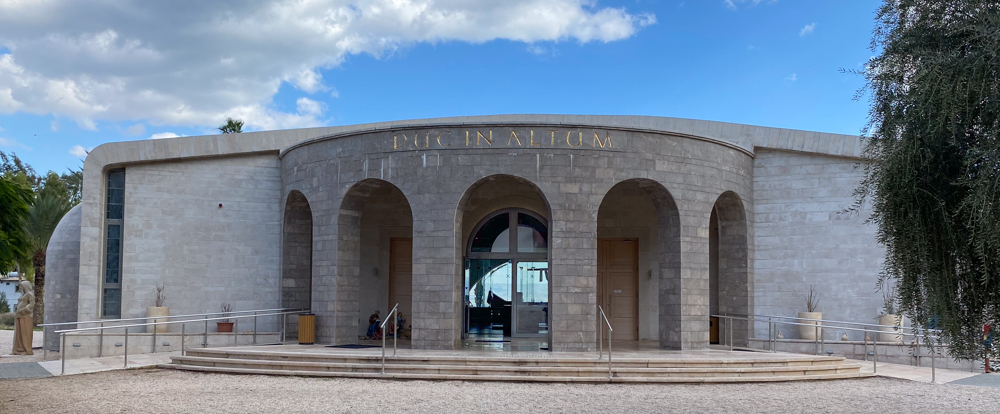
View east: “Duc In Altum” appears above the Magdala Church entrance. It’s Latin for “put out into the deep.” Jesus spoke these words to Simon Peter after he had fished all night without success (Luke 5:4).
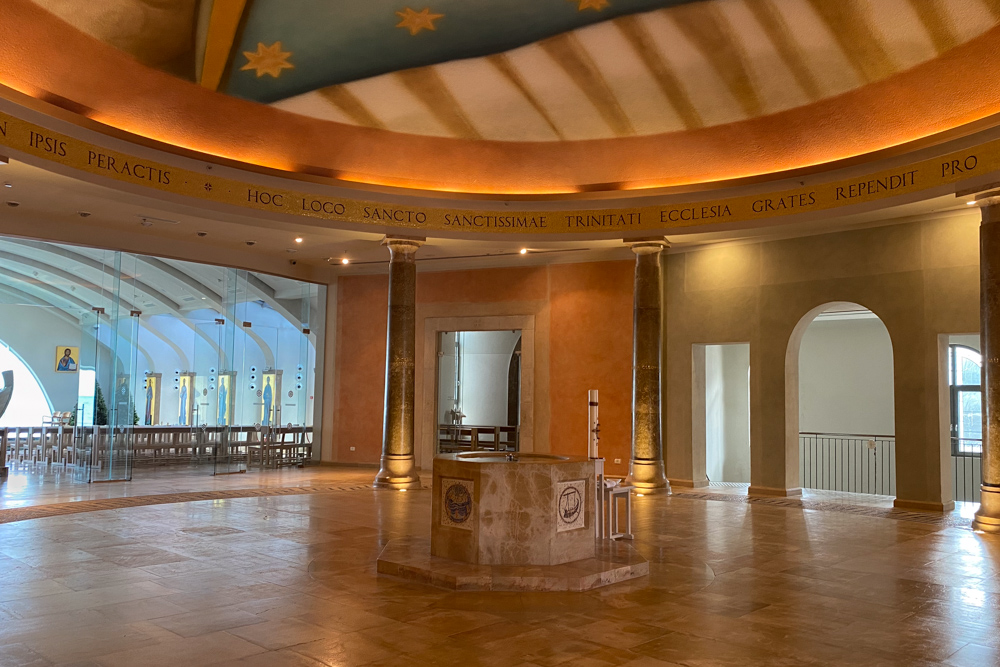
The women’s Atrium inside the Church is surrounded by eight pillars—seven with names of women mentioned in the gospels and one without a name dedicated to all women who visit the church.
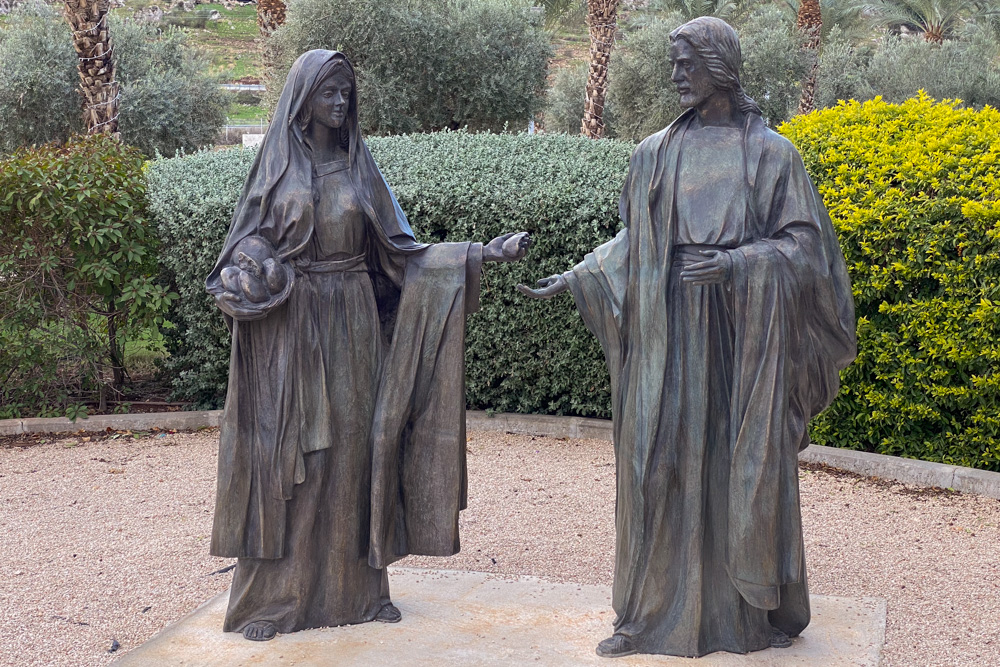
Mary Magdalene was one of seven women who followed Jesus and ministered to him (Mark 15:41). Other Marys included Mary, His mother (Luke 1:5, 2:26); Mary of Bethany (Luke 10:38–42); Mary the mother of James the Younger, Joses, and Salome (Matt. 27:56–28:1); Mary the wife of Cleophas, and Mary the mother of John Mark (John 19:25). Other women who followed Jesus included “Joanna the wife of Chuza Herod’s steward, and Susanna, and many others, which ministered unto him of their substance” (Luke 8:2–3).
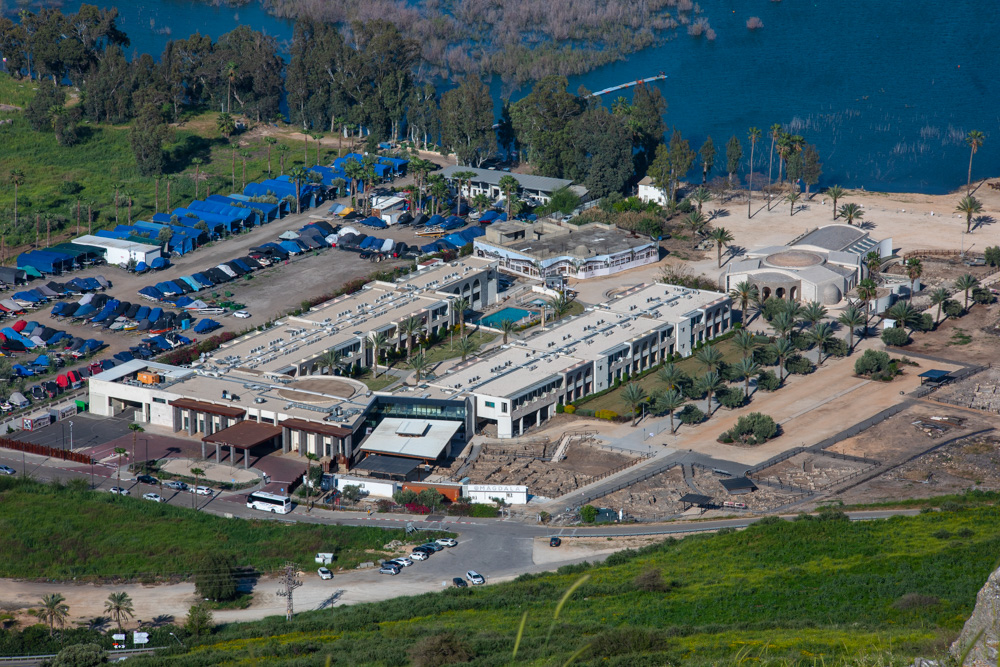
View east: Magdala from the trail descending the eastern side of Mt. Arbel hiking toward Tiberias. You can see the roof over the synagogue (bottom center), the Magdala Hotel (center), the southern excavations of magdala, and the Duc In Altum church (center right).
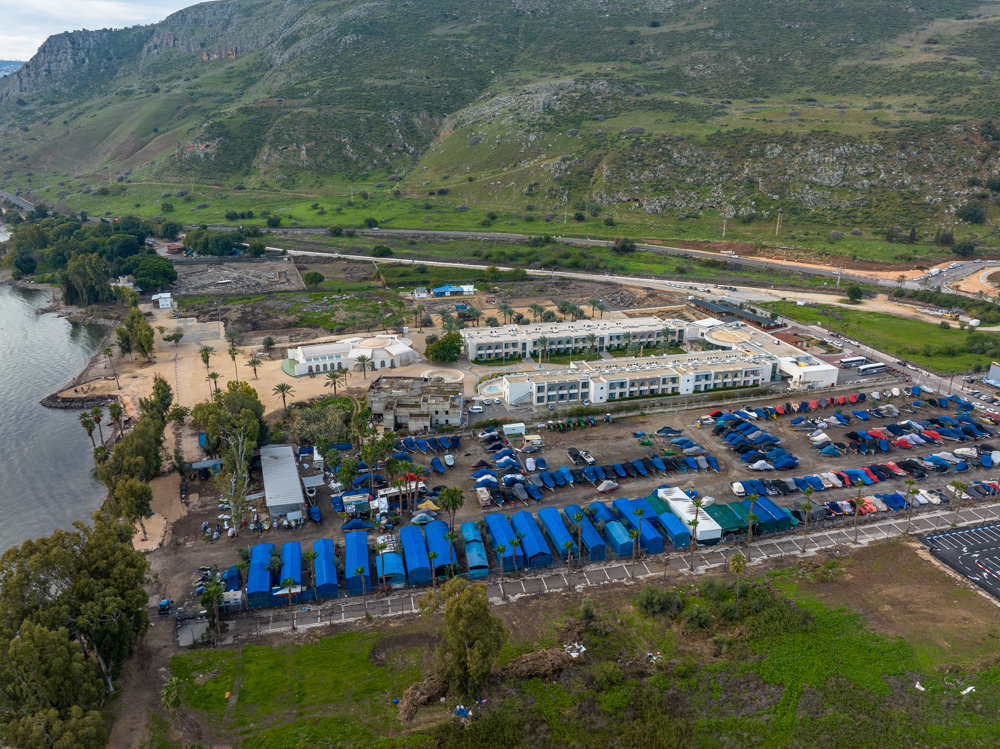
View south: Magdala church (center left) and hotel (center right). A second first-century AD synagogue was discovered across the street from the hotel (orange area) at the foot of Mt. Arbel (top right).
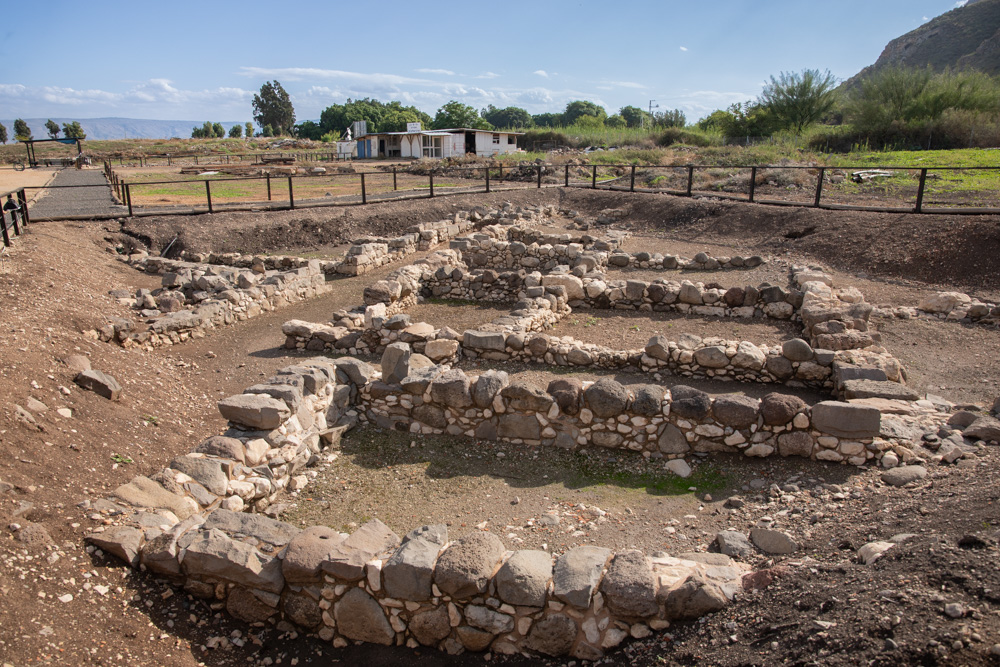
View southeast: Domestic housing area of Magdala. Two streets separate three structures made of roughly hewn basalt stones and some limestone.
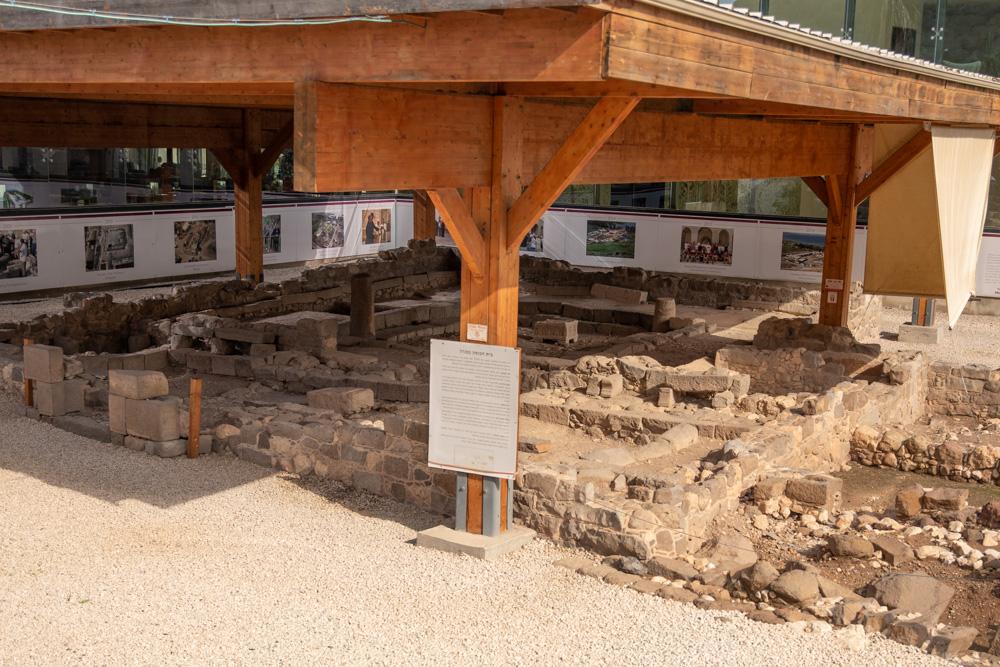
View northeast: The first-century AD synagogue of Magdala. The structure above it was built to protect the excavation (see the photo on page 211).

View east: The port of Magdala. Flavius Josephus mentioned a large fleet of ships in the harbor of Magdala. Archaeologists were able to distinguish the lake bed by the pebbles, shells, and loamy soil.
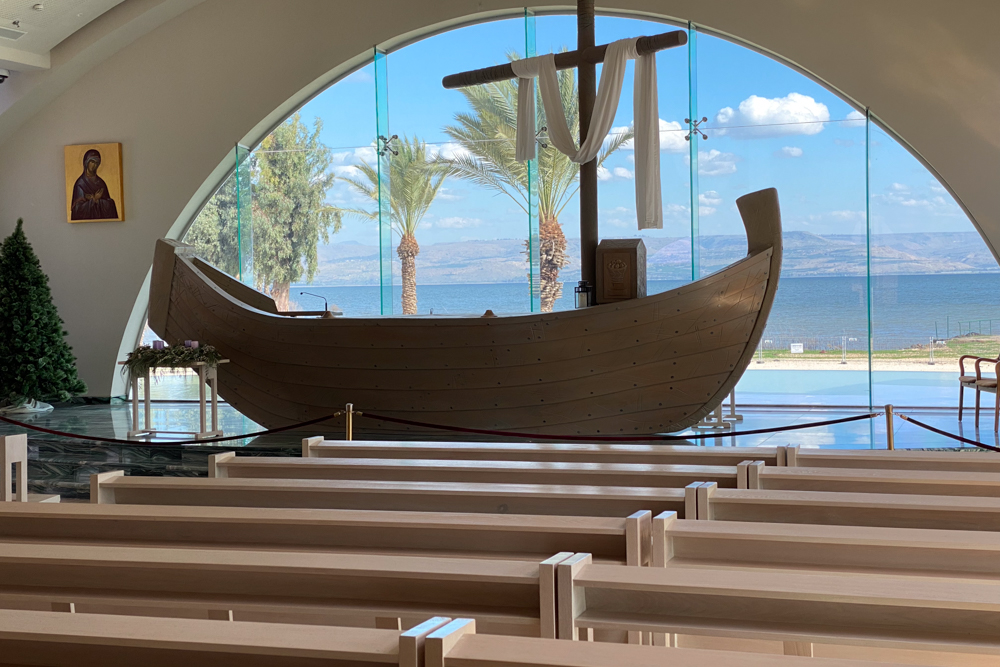
View east: The altar at the end of the church’s main hall is shaped like a first-century AD fishing boat. It is situated on a raised apse paved with green marble, making it appear to be on the lake itself.
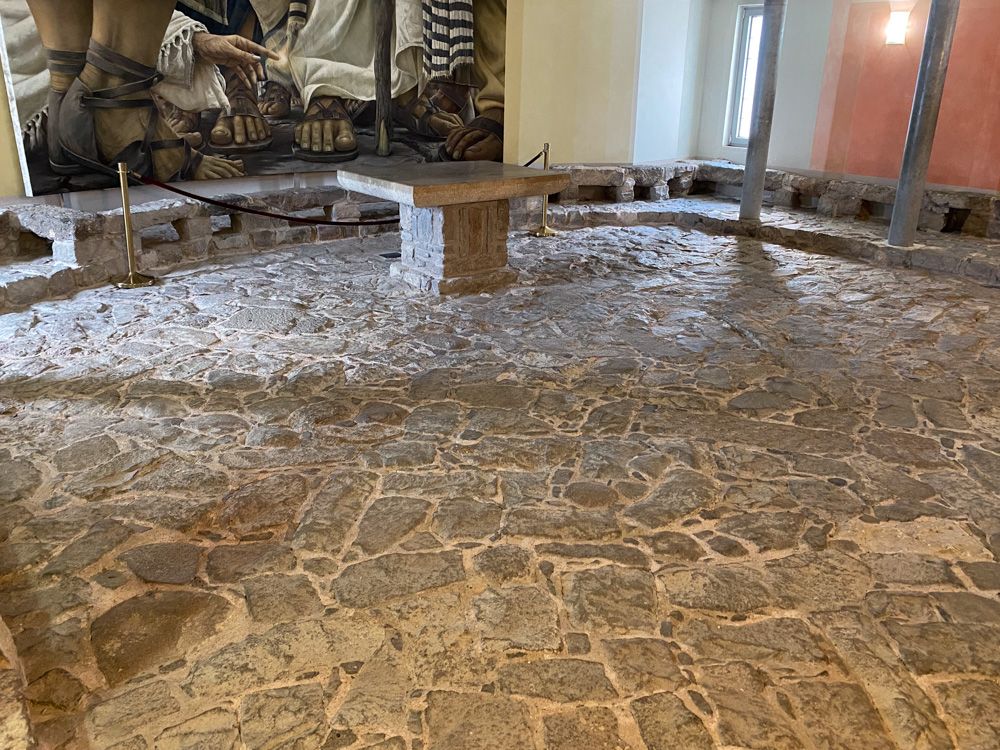
The Encounter chapel is inside the church, built around a paved courtyard dating to the first century. The floor may be from the main fish market located near the wharf of ancient Magdala. The painting behind the chapel’s altar depicts the woman “with an issue of blood” touching the hem of Jesus’s garment (Matt. 9:20–22).
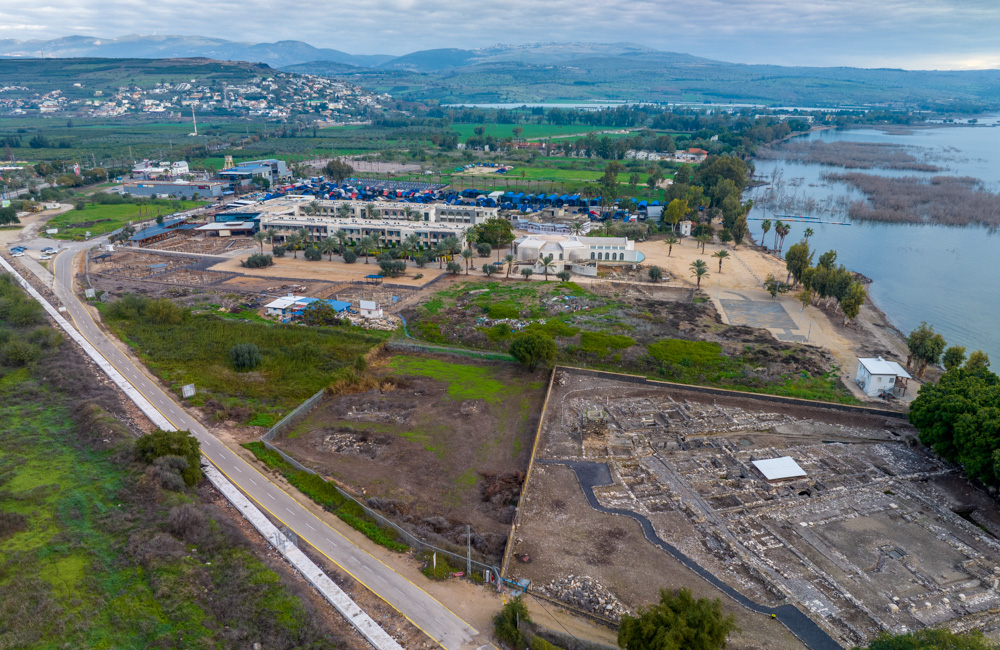
View north: Magdala is at the southern end of the Plain of Gennesaret (center) on the shore of the Sea of Galilee below Mt. Arbel. Safed (top center) is also visible (see “Safed (Zefat)” on page 77).